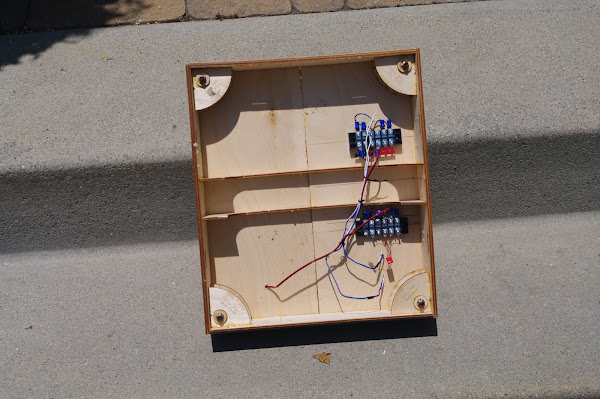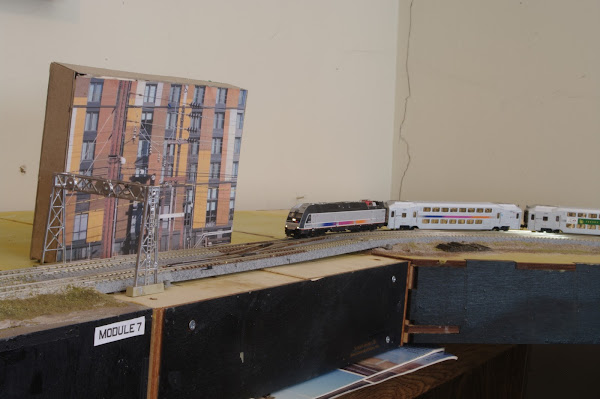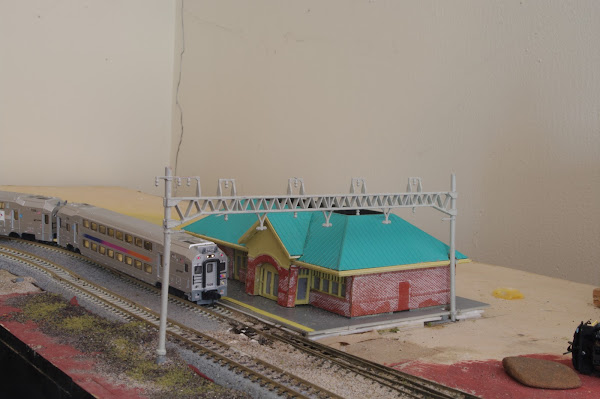Visible below the lower terminal strip in the photo is a tiny Digitrax DS51K1 stationary decoder that drives the Kato crossover.
It's worth pointing out once more that a crossover between the mains is simply not practical for normal T-TRAK standards. It would require a level of dispatching and discipline in a large T-TRAK meet, even with DCC, that I don't think ordinary model railroaders would be capable of. On the other hand, if T-TRAK is done at least partly for home use, it adds a great deal of flexibility and operating potential to a small layout configuration, temporary or semi-permanent. On the other hand, you can take your standard T-TRAK modules to a meet and leave the one with the crossover home. Here I've begun to incorporate the module with the crossover into an L-shaped temporary arrangement with the building flat I mocked up two weeks ago back on it. This shows that it's possible to operate a home-use T-TRAK layout even without a full oval that can incorporate push-pull style passenger operation at minimum, but I'm still playing with other ideas.Sunday, June 25, 2023
Progress On The Bare Table T-TRAK Module
Sunday, June 18, 2023
Walthers Phase IV Superliners
Sunday, June 11, 2023
Still Playing Around With Photo Building Flats
I keep being intrigued by prototype scenes like this, and I keep playing around with possible ways to incorporate them into a layout, especially given the flexibility of T-TRAK modules. So the first thing I did was print out a screen shot of a scene on the video that comes as close as possible to a 90-degree flat-on view of the building alone. Then I posed it behind an N Amtrak model on a T-TRAK module to see how things shaped up.
I assumed a height of 12 feet between floors, and the printout came pretty close in 1:160 without my needing to adjust the size any further.I had a bare-table completed T-TRAK module base without track or scenery, so I took things a little farther. I mounted the screen shot I'd printed out onto a sheet of cardboard I liberated from an empty box of Triscuits. Then I built up a full low-relief builing flat using more Triscuit-box cardboard stiffened with used fireplace matches. I added a cheapo plastic N signal bridge to see what it brought to the scene. Kato plastic catenary supports would also work.
From the photos of this flat posed near commercial N photo style building flats, you can see that the appearance and size are generally in proportion. I took a test shot with a Kato ACS-64 like you'd see in Washingto Well, maybe. I'm still mulling over where to take this idea next.












